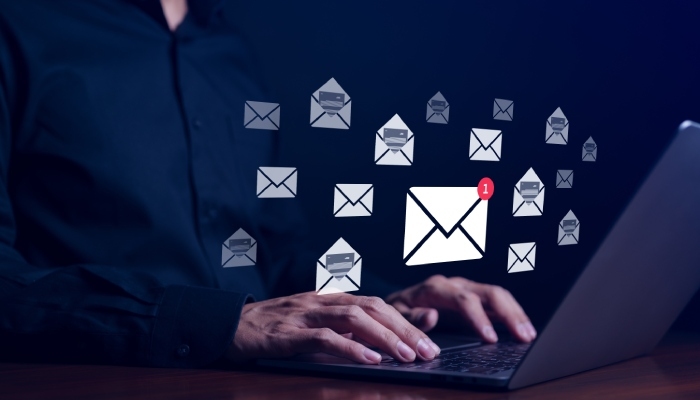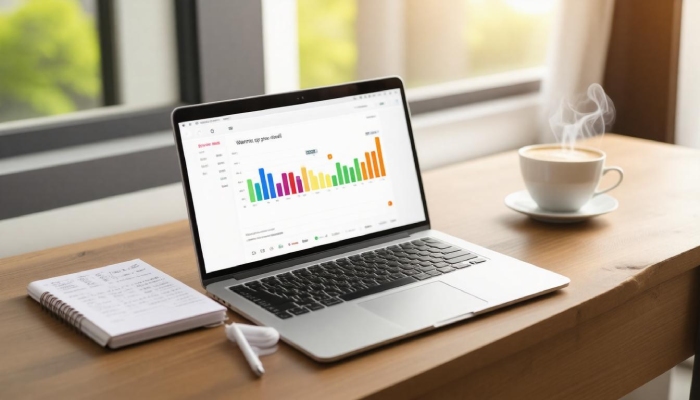How to Warm Up Your Email: Best Practices for Improved Inbox Deliverability
Step-By-Step Guide to Warming Up Your Email
Step I – Start Slowly
The warming-up process begins gently. Picture it as easing into the water rather than diving straight into the deep end. Initially, you should send only 5-10 emails a day from your new email address. This small volume signals to email providers that you are a low-risk sender, someone they can trust. Think of it as laying the groundwork for your sender reputation; every little action counts in gaining those precious points that enhance your deliverability.
Once you’ve established this baseline and gained confidence, it’s time to move forward.
Step II – Increase the Volume Gradually
After a week of consistent emailing, gradually ramp up your volume by 5-10%. For instance, if you started with 10 emails per day, the next week aim for about 11 or 12 emails. This gentle increase helps you maintain a steady presence without raising any alarming flags to email servers that might think you’re jumping into spam territory. Each small bump in volume reinforces your reputation as a reliable sender—it’s like adding bricks to a house: you must carefully build upon what you have laid down before.
Consistency is essential during this phase, yet it’s equally important to introduce some variation.

Step III – Maintain Consistent Sending Patterns
Establishing a routine is critical; send your emails at the same time each day, especially during business hours when recipients are more likely to engage. This consistency not only helps in maintaining your sender reputation but also gives email servers an idea of what typical behavior looks like for your account. However, be cautious—sending too many emails at once or drastically changing your sending patterns can trigger spam filters. Imagine a marathon runner who suddenly starts sprinting—it’s not usual behavior and could raise eyebrows.
Keep in mind that maintaining an open rate of at least 20-30% is essential to signify engagement to Internet Service Providers (ISPs).
Key Considerations
As you proceed with warming up, remember that patience plays a significant role. After your initial weeks of gradual increase and consistent schedules, allow yourself an additional 2-3 weeks before launching full-out campaigns. This time is crucial because ISPs need reassurance that you’re a trustworthy sender. Monitoring metrics like engagement rates can offer invaluable insight into whether you’re headed in the right direction or if adjustments are necessary.
As we explore various techniques for effective warmup communication, keep these steps in mind as they collectively build your email reputation over time—contributing directly to successful outreach campaigns and greater open rates for your messages.
Building on these foundational practices will enable you to assemble a robust audience tailored for your outreach efforts, ensuring that you engage effectively with potential leads.
Building Your Warm-Up Email List

Your warm-up email list is the foundation for establishing your sender reputation. Without engaging and responsive contacts, the entire process can fall flat. It’s crucial to curate a list of recipients who will not only open and read your emails but also reply to them. This interaction sends positive signals to email providers, bolstering your domain’s reputation.
Engaging Recipients
Start with individuals who are likely to engage with your messages. Think about it: who among your friends, family, or colleagues would be interested? These selected contacts should be those you can rely on to interact actively. For example, choose people who regularly communicate with you via email or text—these individuals are more likely to respond positively when they receive one of your warm-up emails.
Including engaged contacts sets off a ripple effect of positive responses that benefits everyone involved.
On the other hand, it’s vital to avoid including uninterested or dormant contacts in your warm-up list. Low engagement rates from these individuals can hurt your sender reputation and ultimately lead to your emails being sent straight to spam folders. Sending an email to someone who hasn’t interacted with you in months could lead to crickets instead of the responses you’re hoping for.
As you build your list, aim for a diverse mix of recipients. This prevents any single group from skewing your engagement metrics too negatively. A ratio of personal and professional contacts often yields the best results, providing varied engagement dynamics that make your warm-up process feel more natural and less mechanical.
The Right Volume of Contacts
It’s wise to keep your initial recipient count manageable—typically between 50 and 100 engaged contacts, as starting too large can overwhelm both you and your new system. Gradually increasing the volume over time while maintaining a focus on specific metrics like open rates and replies is ideal.
Aiming for around a 20-30% open rate during this warming phase tells you whether your chosen contacts are responsive or not.
Regularly monitor this engagement; a bounce rate of less than 2% is essential for keeping your sender reputation healthy. Each week, take note of how many people are not just opening but also interacting with your emails. Keeping track of these metrics provides a clearer picture of which recipients genuinely want to be in touch and which may need reevaluation.
By assembling a carefully thought-out email list filled with eager recipients, you’re setting yourself up for success right from the start—a practice that can ultimately enhance both deliverability and performance as you progress toward scaling your sending capabilities.
Gradually Increasing Sending Volume

A gradual increase in sending volumes is critical during the warm-up process. Imagine trying to jump into a swimming pool; if you dive in headfirst without acclimating yourself to the water, the shock can be overwhelming. Similarly, if you suddenly spike your sending volume, it risks flagging your activity as suspicious to email service providers, jeopardizing your sender reputation and hindering future campaigns.
Weekly Increments
Starting with small, incremental steps is key. For instance, begin with sending about 10 emails per day in your first week. As you see consistent engagement rates, gradually increase this number.
After the initial week, bump it up to 12 emails per day, then to 15 in the second week. This methodical approach builds a steady warmth and reassures email service providers that you are a reliable sender with stable patterns of activity.
Consider extending this pattern throughout consecutive weeks until reaching a desirable target—around 50-100 emails by the second week and aiming for 200-300 by the end of the fourth week. Gradually raising your sending volume makes your email behavior more predictable and less likely to trigger any red flags.
Keep Records
It’s essential to maintain a clear record of your warm-up activities. By keeping a detailed log of emails sent each day alongside engagement metrics such as open rates and replies, you create a roadmap for progress. This allows for effective adjustments along the way and provides insight into what works best for your specific audience.
Monitor these metrics weekly while adhering to ideal thresholds—a minimum open rate of around 20% during the warm-up period helps indicate healthy engagement with your messages. If engagement dips significantly, it might mean any abrupt changes in volume need reevaluation.
Remember: Patience is key in this process; warming up takes time, but investing this effort will pay off in enhanced inbox deliverability and improved overall campaign success.
By steadily increasing your email volume while attentively tracking performance, you create a sustainable sending strategy that builds trust with email service providers and lays the groundwork for successful outreach efforts down the road.
With a solid understanding of how to gradually warm up your emails, it’s vital now to explore advanced methods for monitoring your deliverability effectively.
Essential Tools for Monitoring Deliverability

The world of email marketing is intricate, and without the right tools, it can feel like sailing on an uncharted sea. That’s where monitoring tools come in: they provide a compass, guiding you toward better sender reputation and higher delivery success rates. Utilizing these tools allows you to gain insight into how your emails are performing in real time, helping you make informed decisions that can enhance your overall email strategy.
Popular Deliverability Tools
Here’s a list of essential tools for monitoring deliverability:
| Tool | Features | Price Range |
| SendForensics | Detailed analysis of email content and sending logs | $$ |
| Mailchimp | Comprehensive reports on open rates and engagements | $$ |
| SenderScore | Measures sender reputation and provides benchmarks | Free-$$ |
| MailGenius | Real-time spam score and deliverability tips | Free |
Each tool has its unique strengths tailored to different aspects of email deliverability. For instance, SendForensics dives deep into analyzing the content of your emails alongside sending logs, providing actionable insights that allow you to optimize your campaigns. With Mailchimp, you’re not just sending emails; you’re gaining access to comprehensive analytics on open rates and user engagement.
Meanwhile, SenderScore acts as a reputation monitor, calculating your sender score based on various factors that influence how internet service providers (ISPs) view your email campaigns. A good score can help push your messages toward the inbox instead of the dreaded spam folder.
Additionally, keeping an eye on real-time metrics offered by MailGenius means you’ll always be aware of potential issues before they escalate. It’s like having a safety net that alerts you when something goes wrong during your campaigns, shedding light on spam scores and offering helpful tips to improve deliverability.
Regularly utilizing these tools can drastically change your approach. Instead of throwing darts blindly in hopes that some will land successfully, you’re armed with precise data.
As we turn our focus again to common pitfalls marketers encounter, understanding how to navigate these challenges becomes crucial for successful email campaigns.
Common Mistakes to Avoid

Mistakes in your email warm-up strategy can hinder your success more than you might realize. One of the most prevalent issues is sending too many emails too soon. If you suddenly ramp up the number of emails sent from a new account, email service providers like Nureply will take notice and become suspicious. This abrupt shift raises red flags and may lead them to classify your messages as spam, which defeats the purpose of your warm-up efforts.
Consistency plays a vital role in effective email warming. When it comes to inconsistent sending times, this can send mixed signals to email providers. If you are erratic in the frequency and timing of your emails, it can resemble irregular activity that is often associated with spammers or inactive accounts. Instead, try to maintain a regular schedule for sending emails, gradually increasing the volume at predictable intervals. This routine helps build trust with your email service provider and reinforces the notion that you are a legitimate sender.
Furthermore, be mindful of how engagement metric trends affect deliverability.
You may think nobody pays attention to your emails when significantly low engagement rates signal far worse news—a sign that your emails might be perceived as spam! Ignoring these engagement metrics is like ignoring warning lights on your car’s dashboard; you risk significant issues that can lead to an unwanted visit to the repair shop—in this case, blocked access to recipients’ inboxes.
Additionally, it’s crucial to dodge spammy content in subject lines and messages. Using phrases like “free,” “urgent,” or an overabundance of exclamation marks can easily trigger spam filters. These buzzwords are widely recognized by filtering algorithms designed to protect users from unwanted junk mail. Instead, opt for clear and authentic language that engages your audience without setting off alarm bells.
All these factors intertwine and contribute directly to a successful warm-up strategy.
Consistent practices regarding sending volumes and timing paired with attention to engagement metrics and quality content will enhance your email warming efforts immensely. By steering clear of these common pitfalls, you’ll create a sturdy foundation for successful email outreach in no time.
As each element plays its part in building your credibility as a sender, monitoring your progress becomes essential to understanding the effectiveness of these strategies. Shifting our focus next, we will explore how to assess the impact of your warm-up practices effectively.
Tracking Your Warm-Up Progress

Keeping an eye on your email warm-up process is fundamental to ensuring that your efforts are paying off. Monitoring progress enables you to make adjustments and refine your approach in real-time. The right metrics reveal where you’re excelling and where you need improvement. Just like tending to a garden, tracking the growth of your email reputation means knowing when to water more, trim back, or allow things to flourish on their own.
Key Metrics
Begin by focusing on these essential metrics that provide insight into your email performance:
- Open Rates: Your open rates serve as a barometer for engagement levels among recipients. A consistent rise signifies that your subject lines resonate and that recipients are eager to engage with your emails.
- Click-Through Rates (CTR): These numbers reflect how compelling your content is. By measuring this rate, you can understand whether readers are moved to take action after opening.
- Bounce Rates: Keep an eye on bounce rates as they often point out issues with your email list quality. A high bounce rate indicates potentially outdated addresses needing cleanup.
- Spam Complaints: Monitoring spam complaints should be a priority since they directly affect sender reputation. A lower complaint rate indicates people find value in your emails rather than dismissing them as unwanted.
Regular assessment of these metrics helps ensure that your warm-up strategy aligns with best practices and nurtures positive engagement from the first contact.
To facilitate effortless tracking, consider using automated tools designed for optimizing email outreach efforts. Tools such as Smartlead or Instantly.AI not only assist in managing the warm-up process but also consolidate vital statistics into user-friendly dashboards. This allows for immediate insights, making it easier to pivot strategies based on what’s working or not.

Adapting Your Strategies
As you analyze these metrics, it’s important to regularly adjust your strategies accordingly. For example, if you notice lower open rates, it might be time to refresh your subject lines or target audience segments more effectively. Similarly, if click-throughs lag behind expectations, reevaluating the content within the emails could help uncover areas for improvement. This dynamic approach will enhance deliverability and build stronger connections with your audience over time.
By keeping tabs on these key performance indicators and making proactive changes based on their outputs, you’re setting a solid foundation for sustained success in your email marketing campaigns.
In conclusion, remaining attentive to your warm-up process along with adjusting strategies based on performance metrics lays the groundwork for effective email communication and successful outreach campaigns.



